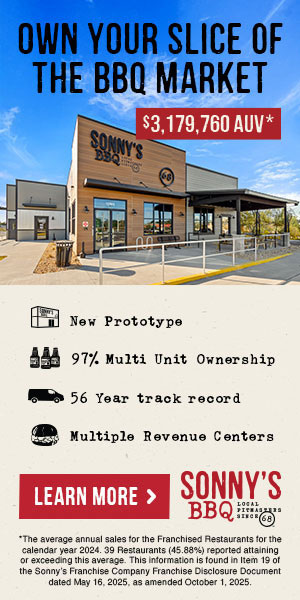Family Inheritance: 5 Tips for Family Business Succession Planning
When it comes to family business succession planning, one thing is certain: Most family business leaders don't do it, they don't do it well, or they wait to do it until it's too late. While the CEO longevity in non-family businesses is an average of six years, for family owned businesses CEOs tend to stay for 20-25 years.
Sure that long tenure contributes to leadership stability and consistency, but it can also fuel flat growth, narrow business focus, and decreasing leadership drive. Additionally, when the CEO and other top level executive family members do not step aside in a timely manner, it causes a high level of frustration in the next generation who is ready to charge forward and make their mark. Once it becomes clear that the children might reach their mid- to late-fifties before taking over, it becomes hard to hold on to the ambitious ones. That's why all family businesses need to have a solid succession plan in place--one that helps the senior generation leave with ease and welcomes the well-prepared next generation.
While succession planning can happen at any level within the organization, we commonly think about the top five to eight key positions for a written, structured succession plan. So as you plan your company's future leadership, keep these points in mind.
- Think beyond seniority. Many family business executives choose their future leaders based on seniority (i.e.: "She's the oldest, so she will be our next CEO."). In some families, the next in line is the oldest male. Of course, a single owner can make the easy decision to pass the business leadership to the child of their choice. But this "easy" choice can backfire if the adult child or the one with the most seniority has not gained respect from other family members and employees. In other words, often the easy choice or the obvious choice isn't the best choice. Therefore, be open to broadening your search beyond the next of kin.
- Embrace a more professional process of skill evaluations, performance assessments, and reviews of career history. The more thoughtful, objective, and inclusive the process of bringing on the next leader is, the more likely that the transition will be embraced. Succession readiness calls for a written transition plan and an individual development plan for the future CEO within three years of the planned succession date. Implementation of the plan may involve identifying other executive team members with succession needs, building a coaching plan, and providing stretch assignments in different functional areas of the company.
- Rank possible successors based on key criteria. Rather than just appoint the next oldest family member to the leadership role, consider creating a list of all the possible successors and rank them, from 1 to 10 (with 10 being high), in each of the following areas:
- Past work experience and advancement history
- Education
- Geographic mobility, if appropriate
- Learning agility
- Prior leadership positions--size and scope of leadership responsibilities
- Advancement potential
- Advancement desire
- Interpersonal skills
- Assessment of the individual compared to the company's values and leadership competencies
- Past performance ratings
- The ability to take risks
- Decision-making ability
- Problem-solving ability
Doing this for each potential successor will help you see which ones are best positioned to move the company forward. Finding a successor with the right mix of skills, attitude, drive, character, and experience that matches your business will ensure the family company succeeds for the long term.
- Groom the next generation. Once you have a successor in mind, offer them additional development through such things as job rotations, stretch assignments, additional profit and loss responsibility, and additional exposure to board members and customers. The more emphasis you place on prepping the next leader, the smoother the transition will be.
- Consider a non-family leader. When a family business member utters the words, "Let's consider a non-family CEO," the first reply is usually a colorful no! However, a non-family CEO frequently brings diverse, in-depth experience to drive business growth, bringing professional alliances, partnerships, and strategy opportunities. They can be a great mentor for the next generation of family leaders--often then known as a "bridge CEO" from one generation to the next. While the family may hold all the stock, it is critical to develop a performance incentive that will reward and retain the non-family CEO and an employment agreement that will fairly treat and protect the CEO.
Choose Who's Next
Thoughtful, ongoing planning for succession is a must for long-term business success and sustainability. Therefore, start now. Develop a clear plan about the succession of senior leader positions, including who will be next, when the transition will take place, and how that successor will be groomed to make the move smoother. The more planning you do now, the better the future will be--for you and your family business.
Lois Lang Psy.D. is a speaker and consultant with Evolve Partner Group, LLC where she helps organizations become high performance workplaces. Lang works with clients on management succession readiness, organizational/team strengthening, executive coaching, executive compensation design, wage studies and mediated conflict resolution. For more information visit www.evolvepartnergroup.com or contact her at [email protected] or 209-952-1143.
Share this Feature
Recommended Reading:
| ADVERTISE | SPONSORED CONTENT |
FRANCHISE TOPICS
- Multi-Unit Franchising
- Get Started in Franchising
- Franchise Growth
- Franchise Operations
- Open New Units
- Franchise Leadership
- Franchise Marketing
- Technology
- Franchise Law
- Franchise Awards
- Franchise Rankings
- Franchise Trends
- Franchise Development
- Featured Franchise Stories
| ADVERTISE | SPONSORED CONTENT |

$350,000
$350,000





 The multi-unit franchise opportunities listed above are not related to or endorsed by Multi-Unit Franchisee or Franchise Update Media Group. We are not engaged in, supporting, or endorsing any specific franchise, business opportunity, company or individual. No statement in this site is to be construed as a recommendation. We encourage prospective franchise buyers to perform extensive due diligence when considering a franchise opportunity.
The multi-unit franchise opportunities listed above are not related to or endorsed by Multi-Unit Franchisee or Franchise Update Media Group. We are not engaged in, supporting, or endorsing any specific franchise, business opportunity, company or individual. No statement in this site is to be construed as a recommendation. We encourage prospective franchise buyers to perform extensive due diligence when considering a franchise opportunity.